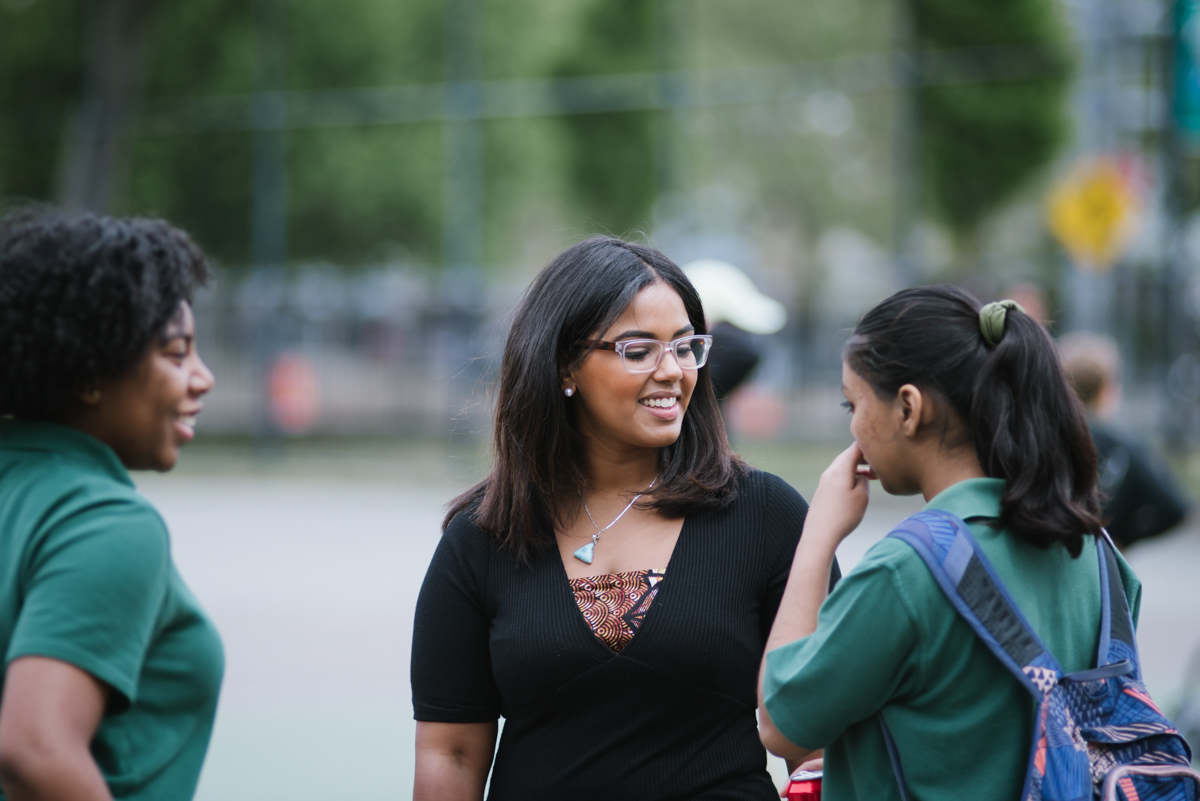An asset-based approach to education is key in achieving equity in classrooms across the country. In recent years, while equity and access efforts shined a light on marginalized and underrepresented communities, some efforts treated schools and communities like they needed to be “saved.” With an asset-based approach, every community is valuable; every community has strengths and potential.
What exactly does it mean to have an “asset-based approach” to education?
In the simplest terms, an asset-based approach focuses on strengths. It views diversity in thought, culture, and traits as positive assets. Teachers and students alike are valued for what they bring to the classroom rather than being characterized by what they may need to work on or lack.
“Asset-based teaching seeks to unlock students’ potential by focusing on their talents. Also known as strengths-based teaching, this approach contrasts with the more common deficit-based style of teaching which highlights students’ inadequacies.” (Association of College & Research Libraries, 2018)
It’s also essential that teachers practice asset-based approaches with their peers and school leaders. New teachers must be supported in their hard work to demonstrate efficacy, which includes coaching that is centered on their strengths to build a foundation for gaining new skills. This runs counter to the damaging burden put on teachers to meet unrealistic growth expectations and the punitive structures that blame teachers for all that may be wrong in schools.
Why does an asset-based approach in education matter?
Schools are increasingly diverse, yet the teacher force still lacks considerable diversity and does not represent today’s student demographics. An article in the New York Times from 2018 highlighted the statistics: 80 percent of the public and private elementary and high school teaching force is white. Conversely, the most recent demographics of the 50.7 million public school students as reported by the National Center for Education Statistics (NCIS) are as follows:
- 23.7 million White students
- 13.9 million Hispanic students
- 7.7 million Black students
- 2.7 million Asian students
- 2.1 million students of two or more races
- 0.5 million American Indian/Alaska Native students
- 0.2 million Pacific Islander students
Teacher preparation programs must wrestle with this stark reality. That’s why one of the core values of the NYU Steinhardt Teacher Residency is an asset-based approach to education. It seeks to eliminate deficit thinking and harmful biases that hold back students, especially those with disabilities, English language learners and emergent bilinguals, and students of color. Teacher residents are taught to look at diversity and differences as attributes to be celebrated rather than things to overcome.
“We know that the best and most organic learning builds on what students already know,” said Diana Turk, Director of Teacher Education at NYU Steinhardt and one of the faculty who developed the Teacher Residency. “In order to reach students, we have to know what they know – not just what they don’t know. We need to see them – and have them see themselves – as capable learners who can learn and do anything.”
Take student discipline as an example: student discipline either reflects the asset-based approach or the deficit model. An asset-based approach focuses on building relationships with and an understanding of students rather than punishing them with detentions, suspensions, and expulsions. Jacqueline Richards, a psychotherapist for children and teens, writes about this in a recent Edutopia article: “While traditional rules-and-consequences discipline is sometimes effective in stopping detrimental behaviors, it may have negative effects on the long-term resilience and connection within the community.”
“Imagine being a student who is seen only through the lens of his or her deficits: as the student who can’t sit still in class or disrupts class with outbursts,” continued Professor Turk. “Now, imagine how it would feel to be that same student, yet instead you’re seen as the child who has more energy than anyone else and therefore can get much more done, or as the child who smiles at everyone and is always in a good mood. This is how asset-based approaches change perspectives in the classroom.”
Great teachers embrace differences in the classroom and make deep connections with their local communities. This is why teacher residencies across the country work to recruit more people from diverse backgrounds. New statistics from the National Center for Teacher Residencies note that more than 50 percent of residents identified as people of color in 2017.
As new, diverse individuals enter the teaching profession, an asset-based approach is central to achieve equity and to give all students the education they deserve. It helps all teachers – no matter their race, ethnicity, or background – learn to build practices that are culturally responsive and respectful of students and their communities.
